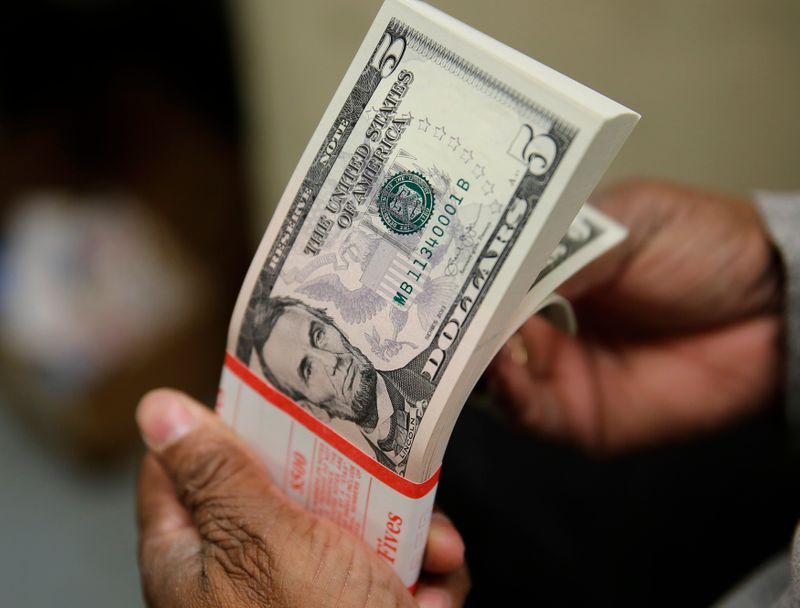The dollar hung around a six-week high on Friday, set for its biggest weekly gain since April due to safe-haven demand on rising Middle East tensions.
Market activity is expected to be subdued ahead of U.S. non-farm payrolls figures – due later in the day – which will help shape the Federal Reserve’s outlook for interest rates.
Data on Thursday showed the number of Americans filing new applications for unemployment benefits increased marginally last week, with the U.S. labour market gliding at the end of the third quarter.
For the payrolls data, economists polled by Reuters expect 140,000 job additions, while the unemployment rate is anticipated to stay steady at 4.2%.
“There is little evidence to suggest a U.S. hard landing is on the horizon,” said Prashant Newnaha, a senior Asia-Pacific rates strategist at TD Securities.
“Our sense is that the risks to September non-farm payrolls lie to the upside and should see USTs (US Treasuries) continue their push higher in yield.”
The dollar index, which measures the U.S. unit versus six peers, was last at 101.92, not far from the six week high of 102.09 it touched on Thursday. For the week, the index is up 1.5%.
The euro was steady at $1.1034 having dropped 1.18% so far this week, while sterling was nursing losses after sliding 1% on Thursday following dovish comments from Bank of England Governor Andrew Bailey.
On Friday, the pound last fetched $1.3131, hovering close to the three-week-low of $1.3093 it touched on Thursday.
3rd party Ad. Not an offer or recommendation by Investing.com. See disclosure here or remove ads.
The U.S. jobs report comes as markets contend with an improving U.S. economic picture and more hawkish tone from Fed Chair Jerome Powell, who on Monday dashed some expectations that the Fed will go big on interest rate cuts again next month.
Markets are pricing in a 33% chance of the Fed cutting interest rates in November by 50 basis points (bps), down from 49% last week, the CME FedWatch tool showed. The Fed cut interest rates last month by 50 bps.
A stronger-than-expected September payrolls number could be viewed as dovish, according to Kieran Williams, head of Asia FX at InTouch Capital Markets, as it would bring the unemployment rate in line with the Fed’s end-2024 forecast.
“This may prompt some officials to consider a 50bp rate cut at in November. Even if (the payrolls data) is uneventful, the USD will face another round of key data next month, with one more payroll report due just before the November meeting.”
Investor focus this week has been on the escalating tensions in the Middle East, with oil prices soaring and risk sensitive currencies sliding.
The Australian dollar was last up 0.14% at $0.6850 in early trading but was down 0.8% for the week, set for its first weekly decline in four weeks.
The New Zealand dollar was little changed at $0.62135 but is down 2% for the week.
Investors are still digesting the plethora of dovish comments from Japanese politicians and policymakers that have reinforced the view that the Bank of Japan will be in no rush to raise interest rates.
3rd party Ad. Not an offer or recommendation by Investing.com. See disclosure here or remove ads.
Earlier this week Japan’s new prime minister, Shigeru Ishiba, said the economy was not ready for further rate hikes, in surprisingly blunt remarks that pushed the yen lower.
The Asian currency has slid 3% this week, its biggest weekly decline since November 2016 and touched its lowest level since Aug. 20 of 147.25 per dollar. On Friday, the yen was 0.2% higher at 146.63.



